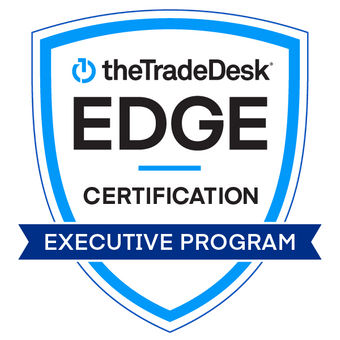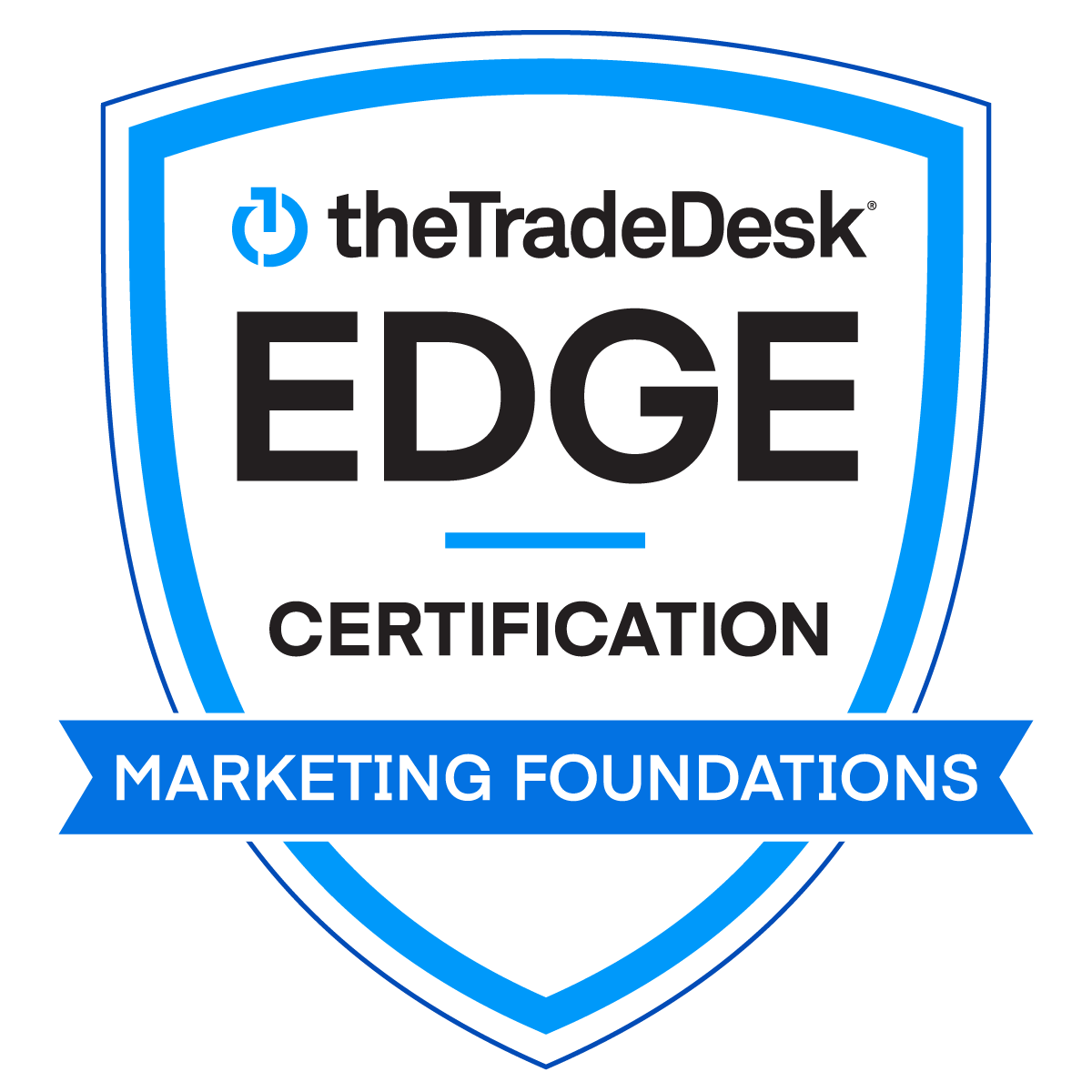John Pedicino receives GroupM's People Choice Award
GroupM announced winners of its first-ever internal agency competition for 2023. The People’s Choice Award, is for a winning presentation and successful client pitch that utilizes proprietary GroupM technologies, associated partnerships, and innovation. Judged and selected by a team of agency leaders, John Pedicino, and 2 other pitch members, were selected as winners. The pitch utilized an omni channel media approach that included carbon neutral eco-friendly marketing tactics, programmatic as the primary execution method, alongside Out-of-home and Connected TV. The award required cross-functional teams to interact and work with various stakeholders across GroupM’s many business units, while working outside of their specific business unit.
Winners were honored at an event held by GroupM management and colleagues in May. The client, Back Market, who utilizes the Wavemaker agency, a part of GroupM/WPP, was new to the US and our US agency teams.
About GroupM
GroupM, headquartered in New York, is WPP’s (a publicly traded company) media investment group, with a mission to shape a new era of media where advertising works better for people. Our agencies - Mindshare, Wavemaker, EssenceMediacom, and T&Pm - are the front door to the advertising industry’s most advanced media strategy, innovation, and activation capabilities.
Responsible for more than $60 billion in annual media spend and the leading partner to the world’s largest media platforms, we leverage a unique combination of global scale, expertise, and innovation to connect brands with their audiences and grow their businesses.
About Back Market
Back Market is the world’s leading refurbished electronics marketplace, powering operations in 18 countries. It is a global marketplace for reborn tech, a place to buy and sell refurbished devices. With a rigorous vetting process BackMarket only sells the best refurbished devices our their platform.
Named one of the World’s Most Innovative Companies by Fast Company, it empowers people to consume tech sustainably by offering folks a high quality, accessible, and more eco-friendly alternative to buying new electronics.
Recognition for Mastery of Executive-Level Programmatic Knowledge
The Trade Desk - Edge Academy Certified: Executive Program
John Pedicino has completed the Executive Program certification which allows earners to be recognized for having a thorough understanding of the core topics surrounding the programmatic marketing industry today. John is well-versed in the constantly evolving streaming television landscape, the role that identity will play in the future of marketing, and how data can be leveraged to make smarter marketing decisions. John has also completed training and certification in Trading Essentials, Data-Driven Planning, Marketing Foundations.
Issued by The Edge Academy at The Trade Desk
Recognition for Certification in Social Media Marketing
June 17, 2021
In recognition of completion of Hubspot’s Social Media certification course, and placing within the top 5 percentile qualification, John Pedicino was issued a certificate by Hubspot Academy in Social Media Marketing. Social Media is nothing new for John, he launched J&J’s social monitoring program for Listerine in 2012 while at Universal McCann (Interpublic Group).
The certificate is part of John’s ongoing commitment to education, and innovation with partners that have similar values. The recipient is deemed, “fully capable and skilled in applying inbound social media marketing strategy.” This is inclusive of ROI analysis, content strategy, social engagement, and monitoring among other skills.
The Rise of Connected TV
Call to actions leading to interactive branding capabilities and engaging content will bring about shoppable experiences, allowing for true ROAS optimization and audience reach like that of today’s digital experience. Marketers should push the envelope with CTV, which in the end is internet enabled television…
October 5, 2018
The Rise of Connected TV
Written by John Pedicino for SMB Media Consulting
As shifts in consumer viewing habits continue, Connected TV (CTV) users account for approximately 182.6 million people in the US, over 55.5% of the population this year. US consumers have continued to embrace cord cutting, digital streaming services and adopt on-demand experiences of accessing content when, where and more specifically how they want. The popularity of Hulu, Sling TV, Roku, DirecTV Now and similar providers illustrates consumers desire to have more control when it comes to the content they want to engage with. For the marketer, reaching streaming audiences is made possible by CTV.
Streaming internet services and major network and broadcast providers like NBCU, ESPN, Turner and Warner etc. are realizing opportunities to tap into additional ad revenues. This gives them the ability to further permeate the digital and programmatic space as traditional TV investments adapt to changes in strategy and capture consumer dollars and audiences. Some
services, like Hulu, have been digital-first from the start, while others such as DirecTV and traditional network/broadcasters have altered their business models from a much more traditional model.
Things to Know
Over-the-top (OTT)/Connected TV (CTV): Content transported from a video provider to a connected device over the internet outside the closed networks of telecom and cable providers.
· It offers the power of digital advertising combined with an engaging, big screen user experience.
OTT leverages “apps” to stream video content to a television via an internet connection. Viewing methods include:
· On-demand – where viewers select and watch content whenever they wish.
· Linear/live – where viewers watch at a particular time, channel or app (live content is streamed in real time as the event happens).
The above references: IAB CTV Primer (Link below)
CTV, like any other digitally transacted format, is sold in a real-time environment, as an impression. Today, it can be purchased programmatically through guarantees, the open auction or private marketplace using your preferred marketing automation software platform. It is a 100% viewable environment and a safer bet when it comes to fraud given the nature of user authentication required when accessing content provider and your device. Now, with deeper technology integrations, advertisers can onboard their own 1st party data and utilize 3rd party audiences, making CTV further addressable and relevant.
Still, significant concerns such as nuances around ad frequency and viewer experience have been recognized as almost mainstream and undoubtedly troublesome. Seeing the same ad two times in a row, might lead to ad recall. However, it is not a positive viewer experience, something most streaming service users have dealt with. This has been top of mind for advertisers, networks, digital MVPDs and streaming providers. It is most directly attributed to attempts at scaling campaigns (from a tech capacity, it is associated with server-side ad insertion), making it essential to set up your campaign while taking a strategic approach.
This includes frequency capping to ensure that at a household level your target audience will only see an ad a given number of instances over a specific time period. Additionally, negotiating with CTV publishers directly regarding what ad slot(s) you are buying on a given application, including an understanding of the content your ad is being run adjacent to and length of that content will impact the overall outcome of your campaign. Working with your technology platform of choice also allows for appropriate targeting and day parting which supports successful campaign activation and are important areas of due diligence and planning.
Advertisers are continuing to seek more control in the programmatic buying processing as access to premium, transparent, direct inventory is of critical importance and has become more competitive. As CTV demand continues to rise, advertisers are more often working directly with publishers, including those selling premium CTV inventory; movement away from open auction transactions towards 1:1 private marketplace deals have become the norm. According to supply side experts, expectations are this migration will continue through 2019.
As CTV investment continues to develop, so will adoption of streaming devices (approx. 204.1 million CTV users by 2021) allowing savvy digital marketers an opportunity to get creative with messaging and engaging with customers directly through their television set.
Call to actions leading to interactive branding capabilities and engaging content will bring about shoppable experiences, allowing for true ROAS optimization and audience reach like that of today’s digital experience. Marketers should push the envelope with CTV, which in the end is internet enabled television. With continued innovation, the opportunity exists to make Connected TV as addressable and experiential as the marketer desires because of its relevance, continued addressability, and connection to consumers cross-channel digital behavior. Further, we can make it an experience worth consumers time to engage in, while gaining meaningful learnings, something that is at times is forgotten in programmatic.
Learn more about Advanced TV Targeting through the IAB primer including best practices for advertisers by visiting or eMarketerbelow:
https://www.iab.com/wp-content/uploads/2018/02/TV-Targeting_08082018.pdf
"Is everything for sale in media now?"
Last week marked a significant inflection point in digital media, as news of the approval of AT&T and Time Warner's mega-merger quickly reverberated throughout the media ecosystem, causing players of all types to ask themselves what else in media might be for sale. Media executives are grappling with the implications that come with the impending M&A fervor, however the larger question connects to the fact that open ecosystems are changing, adapting and becoming closed.
Closed ecosystems didn’t necessarily start with Google and Facebook but they are huge contributors. In 2011, Comcast bought NBCU beginning what would be the media shakeup we live in today. In 2015, Verizon acquired AOL, followed by Yahoo in 2016. The idea that everything is for sale now did not start yesterday. Recall the multi-billion-dollar merger of Time Warner and AOL in 2000 and the resulting failure – one of many during the dotcom bubble. The positive verdict for AT&T yesterday has indeed reaffirmed that media mega-mergers can happen and will continue to promote further consolidation. What is the worry?
OATH owned by Verizon (AOL, Yahoo, MSN Advertising and associated O&O properties) attribute to a large percentage of ad traffic to DSPs and are major players. But it is in owning that content, online and offline that truly should worry the trader, average American or anyone concerned about monopolistic protections. As consolidation continues, have adtech companies looked at the risk and reward of their partnerships with major publishers and media corporations to understand the implications? Have they built out better relationships, contracts and ways to manage the changes they face?
The flood gates are open, now that Disney is in the conversation to compete with Comcast NBCU to buy Fox and the major media owners are coming together to create their own closed systems. No one forget the long bitter merger conversations between CBS and Viacom and the many smaller guys but the street is focused on these big three Disney, Comcast and FOX waiting for the next move. The rest are looking harder and encouraged by the outcome of yesterday’s case.
The situation and questions we face today are not new to the world of media. However, they are very important in looking towards the future. We will have an already behemoth, Comcast NBCU, acquiring SKY TV, with the goal to model products similar to Netflix. Would the addition of FOX help fulfill that vision, for sure. Think control of another studio to build new content, additional outlets for ad income and subscription services. In a competitive market with tighter margins, debts reducing stockholder dividends and stakeholders asking questions, we have not taken into consideration the true cost of our evolution as an industry.
Is everything for sale now? Are we that close to a true inflection point in media and advertising that is inclusive of all formats and content wherever they live? Is consolidation the best idea closed ecosystems? Are we moving in the right direction to offer our clients and consumers the best outcomes? Is the statement that we are looking to reduce pricing, increase access, (as was inferred by AT&T) for the consumers good through acquisition accurate? Those questions, I will leave to you, the industry.




